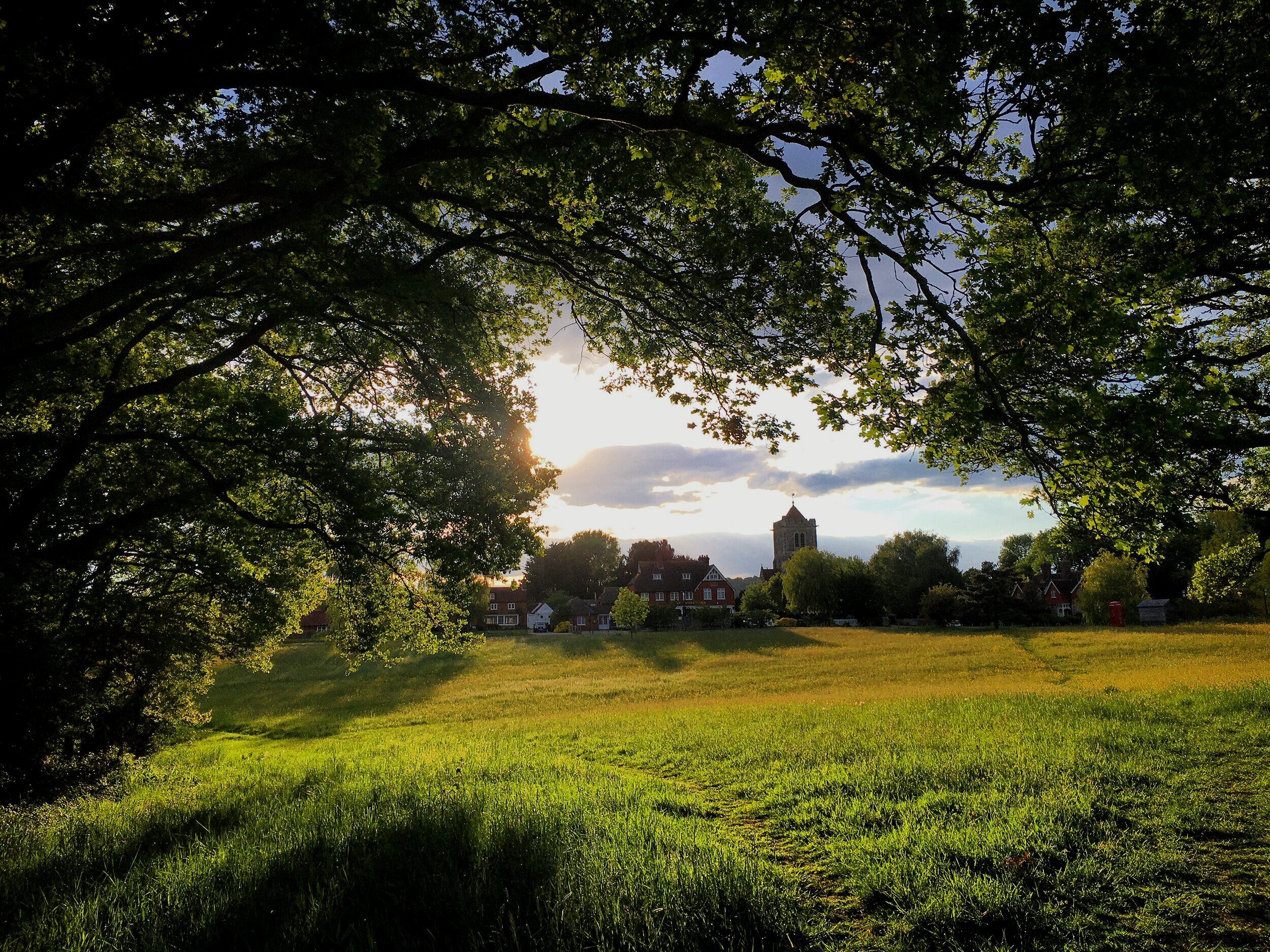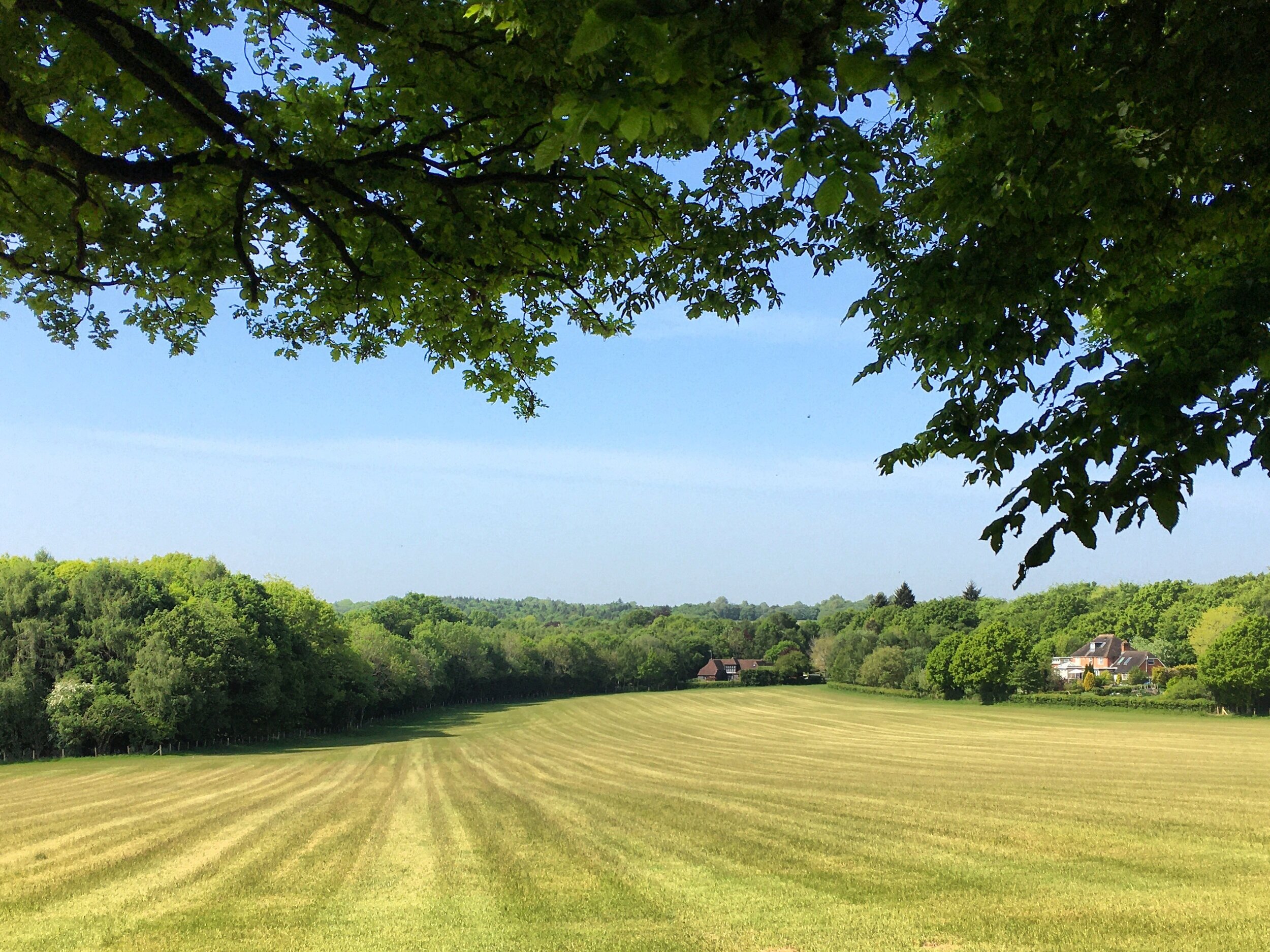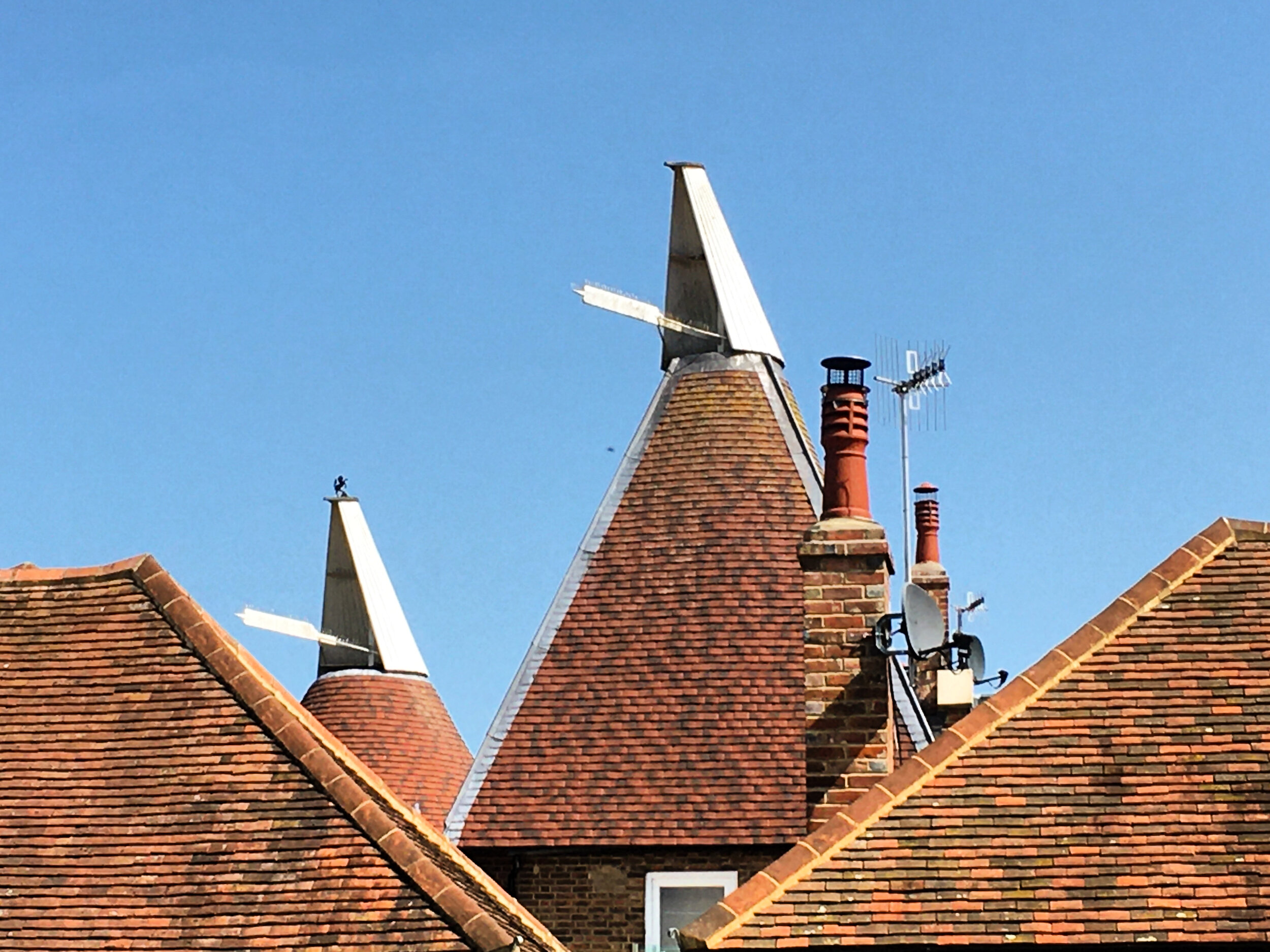Walk 7: The Long Way Home
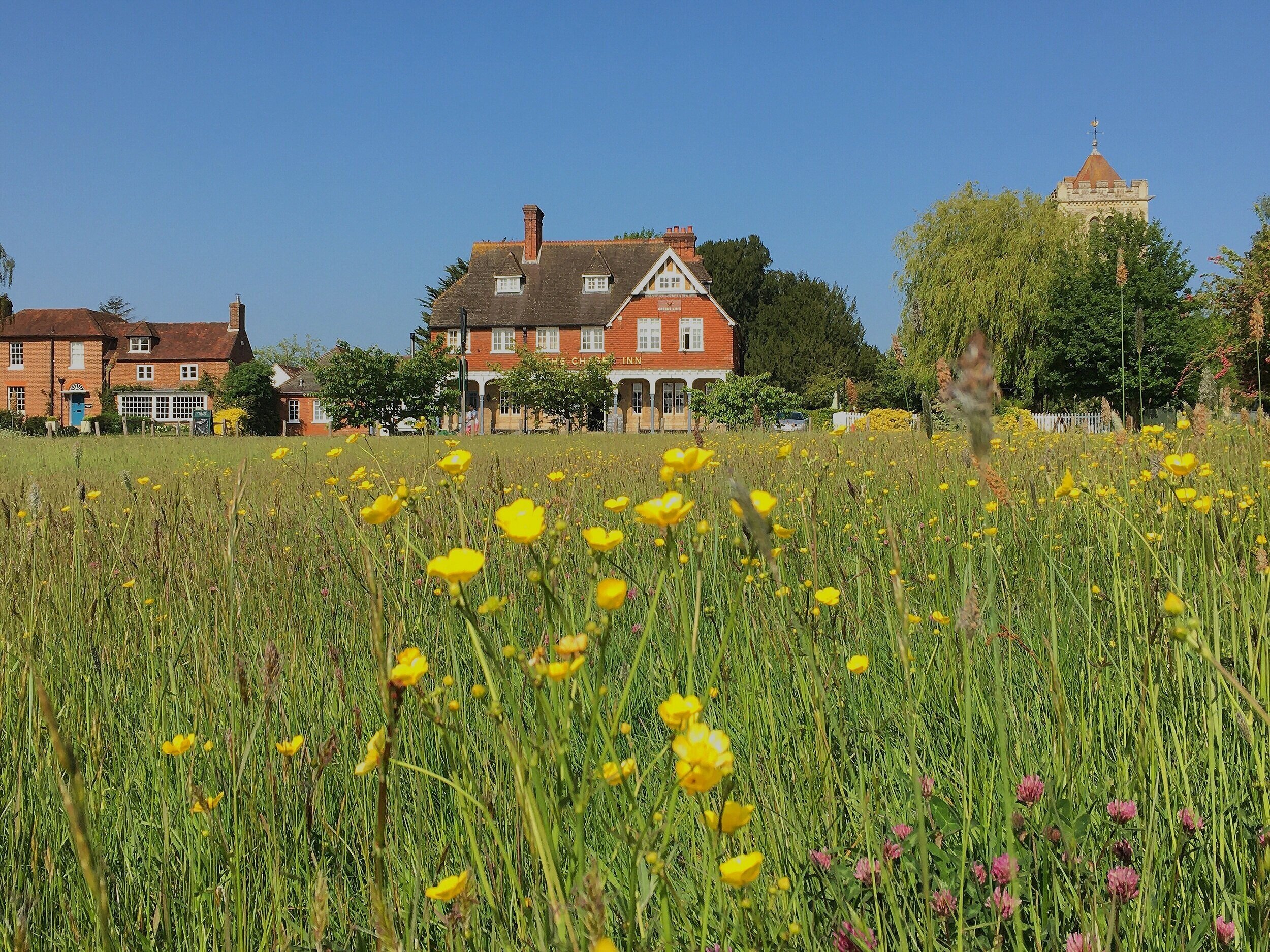
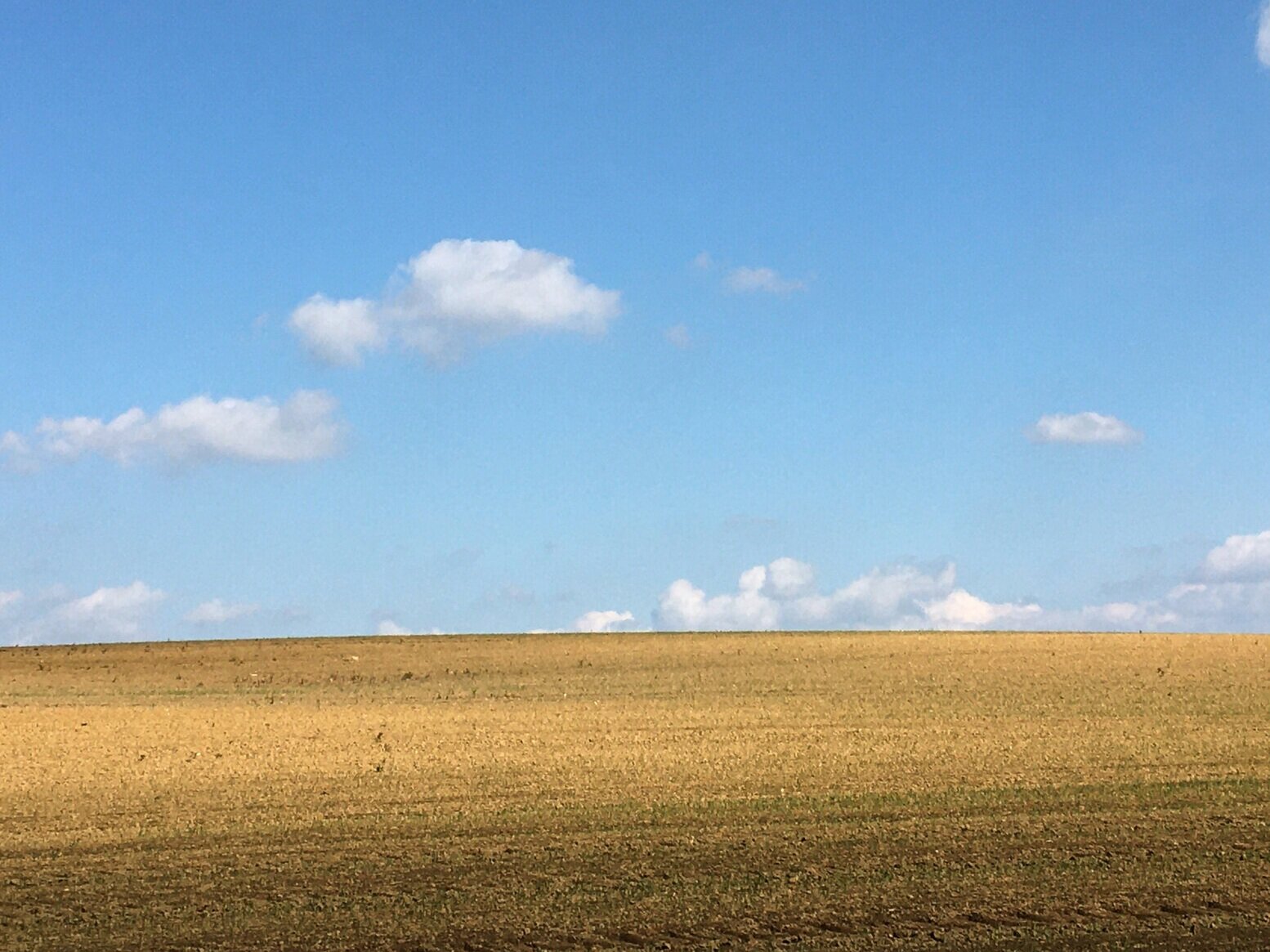
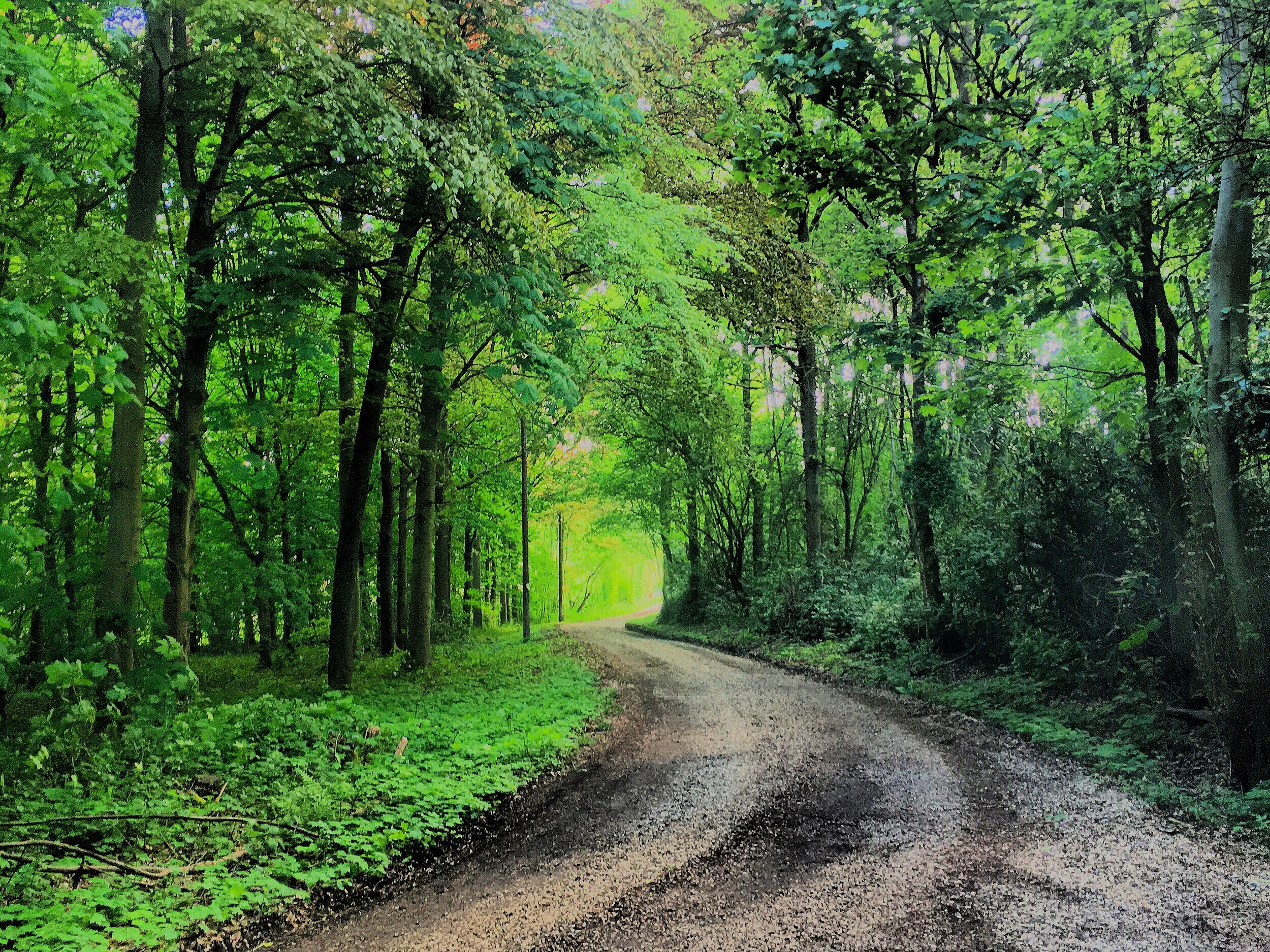
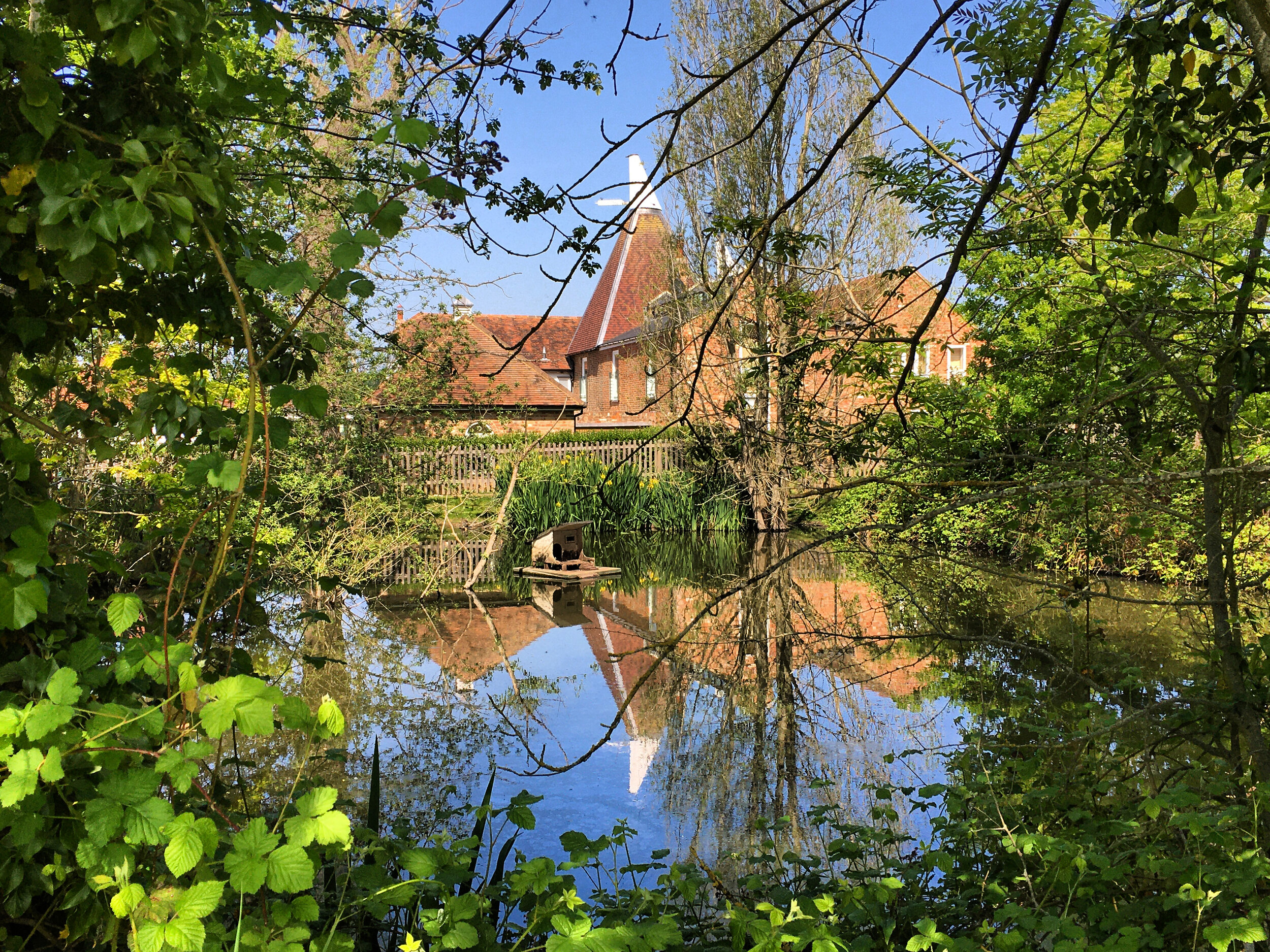
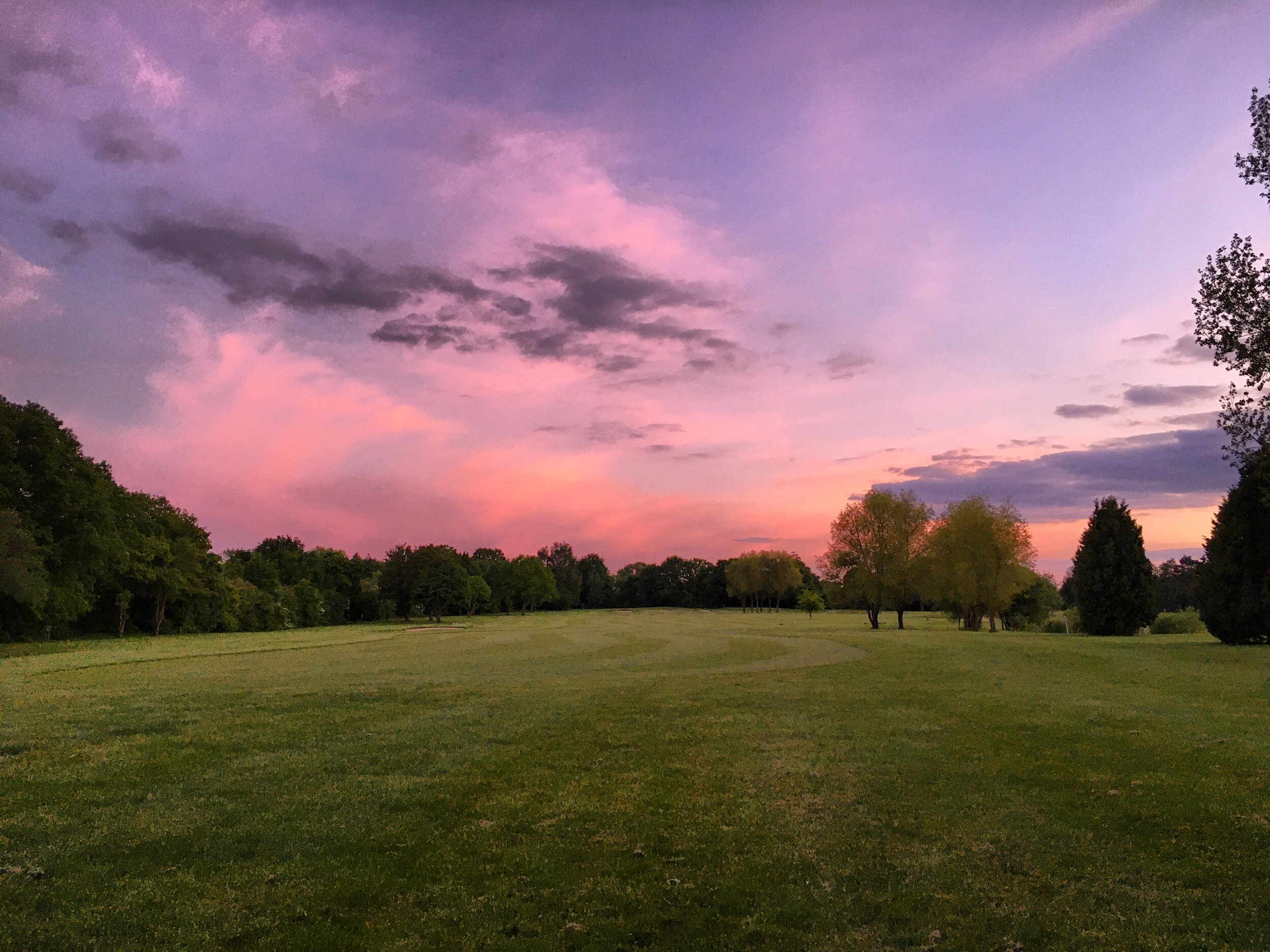

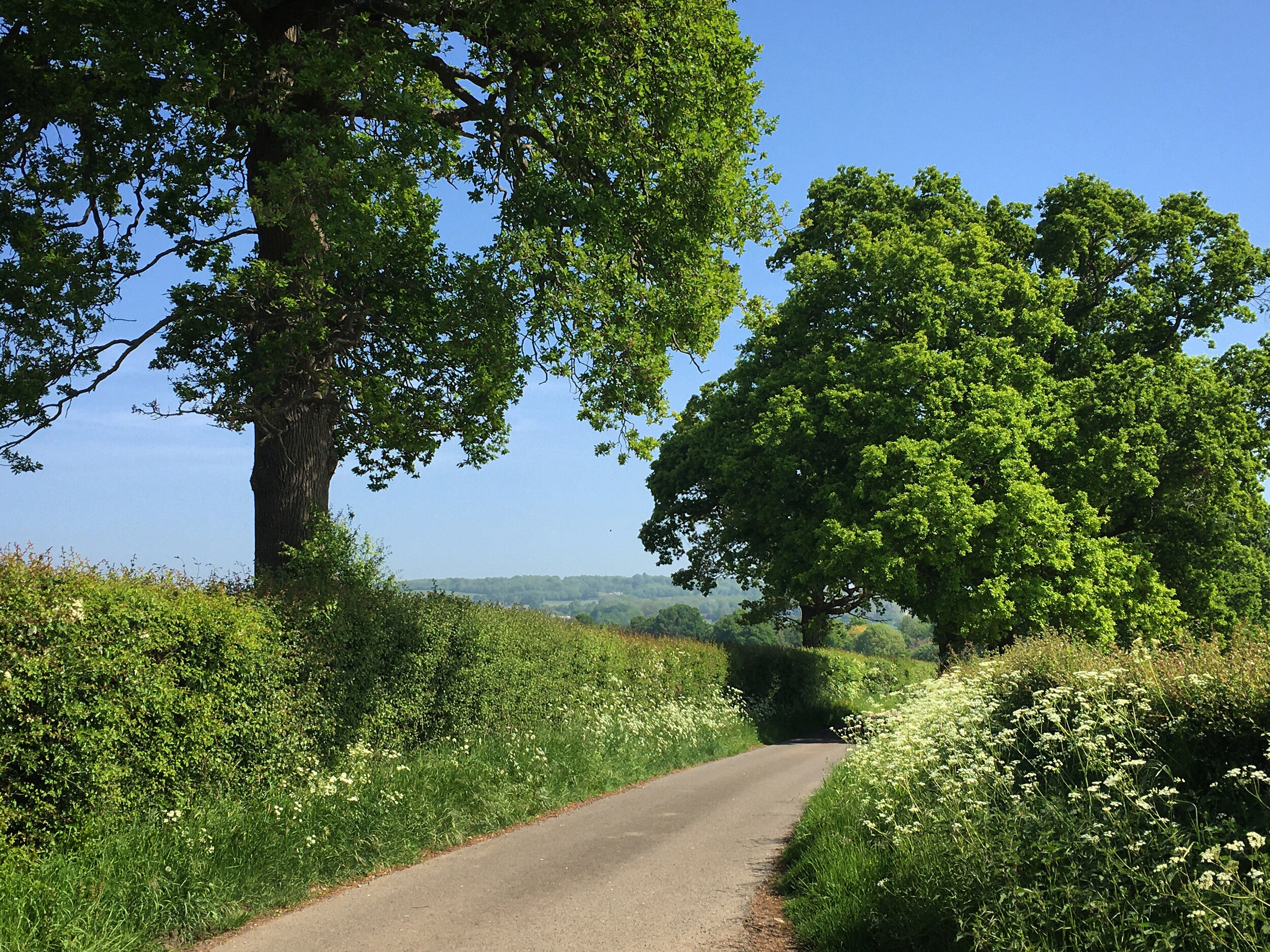
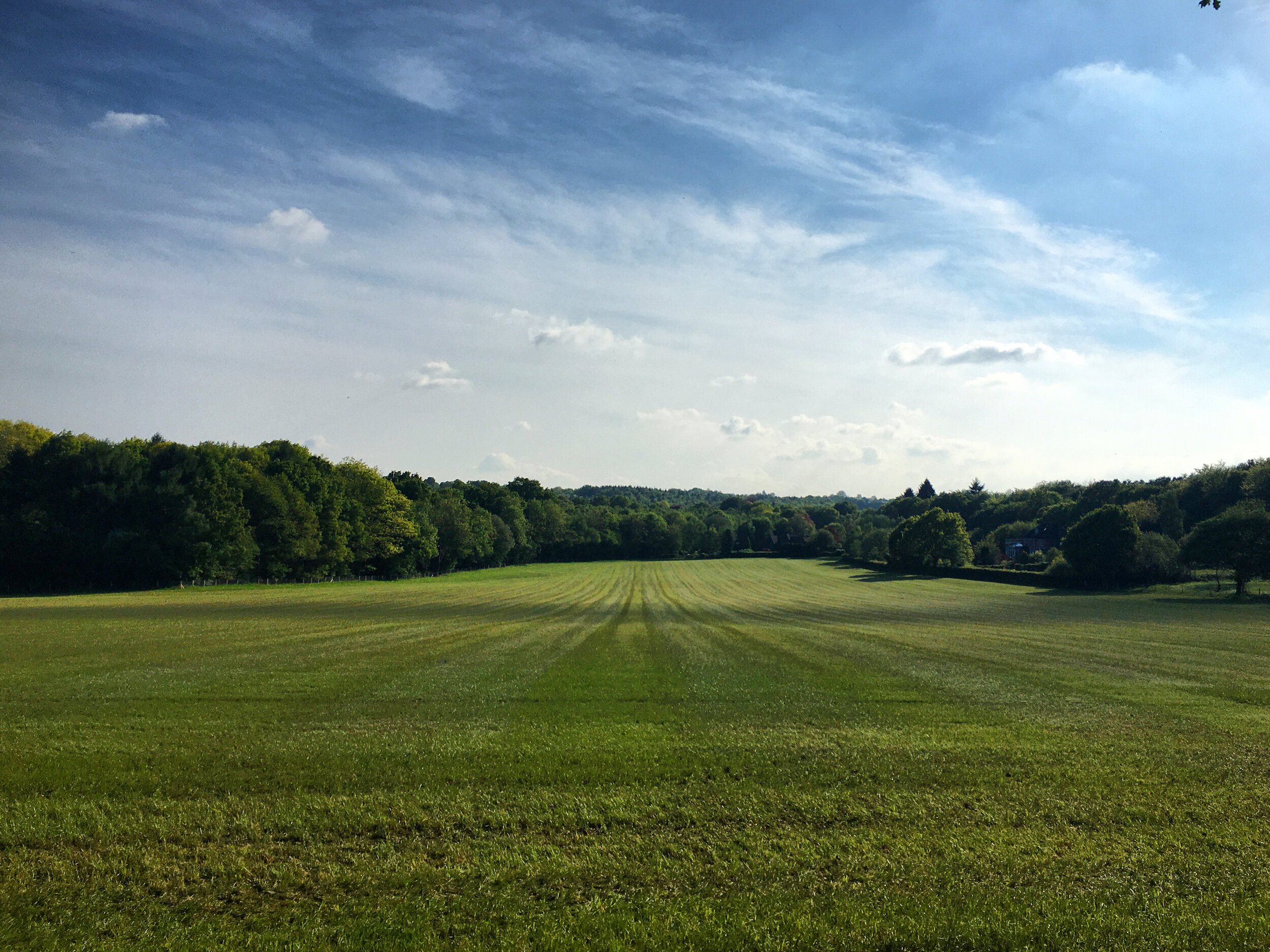
Prior to lock down my experience of walks around North Tonbridge was strictly limited to the occasional afternoon, huffing and cursing my way round Poult Wood golf course, normally coinciding with the the two weeks of summer we get around June.
Looking to redress the North/South balance I plotted out a new route and dragged along a walking buddy for company. After ascending Hoad Hill we found ourselves at a cross roads. The original plan had been to turn right and head towards the woody oasis that is Dene Park, but the little blue tankard on the map beckoned us off -piste. With the evening light beginning to fade, we made the call to take ‘The long way home’ building in an impromptu diversion via Shipbourne. The pub was shut of course, but the rich history of the village and the Fairlawne estate that I have read up on since that detour made it more than worth it.
Begin your walk at the corner of Whistler Road and Shipbourne Road.
Walk North for 100 metres before crossing the road and turning left into Horns Lodge lane. This is a private road that runs all the way to neighbouring Hildenborough. Horns Lodge Farm was once part of a large estate owned by Edward Smith Stanley, the 14th Earl of Derby. Lord Derby was from a long line of wealthy landowners, but carved a name for himself in politics after serving three times as British prime minister. In case you were wondering, it was his horse loving grandfather which the famous race was named after. You can read more about the Earl here.
Horns Lodge Lane, Tonbridge
Follow the lane for 800 metres (1/2 a mile) until you reach the T junction at the farm. At this point turn left, following the road round to another junction, before taking the track to the right. This is where the walk meets the Fairlawne estate. Walk through the wooden gate, past the barn and the stacks of logs, continuing until you meet a second wooden gate.
If you’ve ever driven or walked round the countryside surrounding North Tonbridge you will probably recognise the name Fairlawne. The estate consists of 1000 acres and includes parts of Hildenborough, Tonbridge, Plaxtol and practically all of Shipbourne.
Logging on the Fairlawne Estate
Pass through the gate into the meadow and follow the hedge on your right. In Spring wildflowers populate the hedgerows adding a splash of colour to the otherwise grassy field. Follow the path to the end of the next meadow and then walk through the gate into the woods.
The route climbs uphill sharply, snatching your breath away before levelling off and giving you some respite. Bluebells are prolific once more, but it’s the giant hollow tree that is one of the most unusual features.
Through the trees to your right, a huge field casts an optical illusion as it bounds upwards to the sky, making for dramatic pictures, especially in winter when the trees are stripped bare.
The hollow tree at Tinley Lodge toll
Walk on until you emerge from the woods. At this point, look back for fabulous views. On a clear day you can see as far as the twin masts of Castle Hill, sitting high above Tonbridge in the valley below. You will recognise these if you have walked ‘To the viaduct’.
When you reach the cross roads at Avenue cottage, cross the gravel drive and walk straight ahead along the grassy path running between the two woods. This can get very muddy after wet weather, so plan ahead. After 100 metres, turn off to the right slightly and pass through the enclosed kissing gate.
Walk through the field and then at the hay barn take the path to the right, keeping the hedge to your left. There’s a particular chatty cuckoo that lives in the trees nearby, listen out and you may hear it on fairer days.
Pass through another enclosed gate at the end of the field and take an immediate right. Walk for 10 metres and then take the path to the left that runs alongside the horse paddock at West Green Farm. This will lead you through a gap in the hedge and onto Hildenborough road.
Turn right and walk along the verge for 200 metres before taking the path on your left, joining the Fairlawne estate once more.
Bluebells at Long Slope Wood
The estate is named after the nearby grade 1 listed mansion, that was built by Sir Henry Vane (the elder) in the 1600’s. Sir Henry served as secretary of state to King Charles I, but it’s his son, Sir Henry (the younger) that makes for more interesting reading.
He began his life in politics with a short but eventful spell as Governor of Massachusetts (then an English colony)before returning to England, where he married and was subsequently awarded the Fairlawne estate by his father. His career in politics continued during the English civil war, at which point he worked closely with fellow puritan, Oliver Cromwell. Although he did not advocate the execution of King Charles I, his alliance with Cromwell proved to be his downfall, when he was later charged with treason and executed at Tower Hill, an event recorded by Samuel Pepys. You can read more about ‘Sir Harry’ here.
Cross the bridge and then walk through the field, passing alongside the wood. The path then turns right, gently climbing uphill. You will see St Giles church up in the distance. This is the final resting place of Sir Henry Junior, whose headless body is interred in the crypt.
The Greensand ridge
Follow the path until you reach the church yard. Before you go through the trees, look to your left for a stunning view of the Greensand Ridge. The ridge takes its name from the green coloured sandstone that runs from Hampshire all the way to Romney Marsh, but is better known locally as the name of a popular gin that is distilled down the road.
Commemorative stone at Shipbourne church
After the previous incarnation fell into disrepair, the church was was rebuilt in 1879 by Edward Cazalet, the new owner of Fairlawne. A grand monument dedicated to Lord Barnard (Harry’s fifth son) is all that remains of the previous church.
Mr Cazalet built a coaching inn at the same time, which was later renamed The Chaser. Take the path through the church yard and you will see the pub on your right. The food here is superb and draws visitors from miles around. In winter there are roaring log fires to cosy up next to and in summer you can savour the beer garden in the shadow of the church.
The Chaser, Shipbourne
The Cazalet family lent an air of glamour to this sleepy village during their time at Fairlawne. Beginning with Edwards only child William, a talented real tennis player that represented team GB in the 1908 Olympics.
His son, Peter, (Edwards grandson) was best known for training the Queen Elizabeth, the Queen Mothers race horses, whom he provided with over 250 winners. His jockey was Dick Francis, who was equally famed for his crime novels.
During his time at Fairlawne, Major Peter Cazalet employed Albert Roux as his personal chef. Encouraged by the Cazalet family, Albert went onto open La Gavroche, the first English restaurant to obtain three Michelin stars. During his time at Fairlawne, Albert’s son, Michele Roux junior was born and schooled locally.
In 1968 St Giles played host to a star studded wedding when Peters daughter Sheran married Sir Simon Hornby. Some of the famous faces in attendance included the Queen Mother, Princess Margaret, Noel Coward, Elizabeth Taylor and Richard Burton. There’s some brilliant footage of the occasion here. Can you imagine the reception?!
St Giles Church, Shipbourne
Peter Cazalet died in 1973 and is commemorated at St Giles along with other members of the family. Unable to maintain the stables, his son sold the estate in 1979 to Prince Khalid Abdullah, a member of the Saudi Royal family, and another horse racing enthusiast. He remains the owner of Fairlawne to this day.
Upon leaving the pub, cross the road with care and walk diagonally right across the common. In summer this will be filled with butter cups, making it a lovely spot for a picnic should you not wish to dine at The Chaser. If you time your walk right you can stock up on supplies at the weekly farmers market.
Looking back across Shipbourne common
Keep your eyes peeled for a wooden kissing gate tucked in the hedge on your right. Make sure you replace the loop and keep dogs on a lead as there are goats in this field. Once you reach the other side, turn left out of the next kissing gate before proceeding along Back Lane with care.
After 200 metres walk through another kissing gate and then take the narrow path between the hedges. Cross the little bridge and then follow the stream round until you reach the steps at the entrance to the woods.
The steps leading into Point Wood, part of Dene Park
Climb the steps and then turn right, walking through Point Wood. This is part of Dene Park, once one of four hunting grounds belonging to Tonbridge Castle, or Tunbridge as the town was known back then. Another of these was located at Postern Lane, a quiet part of town that features in the ‘Orchards and river song walk’
Stick to this path as it curves round the edge of wood. Once you reach the fence where the paths cross, turn left and walk straight for approximately 600 metres - ignoring the track that turns off to your left. There’s a steady climb uphill which is big enough to justify having that dessert at lunch. Walk past the pond at which point the path plateaus before easing downhill again.
Once you reach the barrier, keep going straight and follow the shingle track until you a see a path to the right, leading between a garden and a field. Stay on this and eventually you will see a car park. At this point stay to the right and continue until you reach the road.
Dene Park, near Tonbridge, once a hunting ground for Tonbridge Castle
Turn left and then walk along Puttenden road with care for 400 metres until you see a path on your right. This will lead you into the aptly named Clear hedges wood. The gaps in the hedges allow you to look back across the meadow to Dene Park, giving you some indication of how big the forest is. In Autumn this will be a bonfire of colour. The name Clear actually deviates from the De Clare family at Tonbridge, this strip of woodland would have once been a boundary marker for the hunting ground at Dene Park.
View of Dene Park from Clear Hedges Wood
Stay on this path for around 650 metres until you reach a track. Take a right turn and then an immediate left into what becomes Frith wood. Follow this path for 100 metres until you reach a large gap in the hedge.
Stroll onward appreciating the view as you go. Rolling fields and hedgerows run for miles in either direction punctuated only by Hadlow Tower in the distance.
Rolling hills near Stallions Green
Turn left and then follow the path round to the right and you will eventually come to a stile. Climb over and then turn right into High House lane, walking past the little row of cottages at Stallions Green.
Cow parsley lines the verges in summer, and in Spring the fields on your left will be teeming with lambs. The road is normally quiet but keep an ear out for cyclists as this is a popular route.
High House Lane, Hadlow
After 800 metres you will reach Ashes Lane. Turn right and then cross the road, taking the path to your left down the driveway, past Robin House and the bungalows. Continue along the narrow overgrown path until it forks at the meadow. At this point turn right and walk along the back of the gardens and the giant green house. This is not the most scenic part of the walk, but needs must.
Climb the stile, cross through the little meadow and then cross another stile onto the drive way. Climb a third stile next to the Poult House, a 17th century grade II listed residence located next to Poult Wood.
Poult wood golf course - look out for flying balls…
The golf course is one of many legacies left behind by Mr Sydney Simmons. It opened in 1974 after he persuaded the council to purchase the 93 acres of land from the North Frith Estate, opening up golf to the public in Tonbridge for the fist time. Not only did he help design the course and club house, he was also the first club captain and had the honour of taking the first shot.
A fairway at Poult Wood, the first public golf course in Tonbridge
At the hedge, another stile leads you directly onto the course, keep dogs on a lead and beware of flying golf balls.
Turn left, walking through the hidden gap in the bushes and then cross over two little bridges. Continue straight across the fairway with care, heading for the green footpath sign in the distance.
Cross a second fairway and follow the signs along the edge of the golf course before exiting via the wooded path on the left. Walk through the kissing gate and you will come out on Higham Lane, the same road where Sydney built his family home back in 1957.
Take the footpath on the opposite side of the road and follow this for 400 metres until you reach Grange Farm. Walk round past the pond and the oast houses and then take the path down to the left of the drive way. Until a few years ago the farm and its oasts were derelict, but a sympathetic renovation has left these looking picture perfect.
Grange Farm, Tonbridge
The path leads through two large fields. You will start to see houses coming into view on your left as you begin your descent back into North Tonbridge. These can be also attributed to Mr Simmons, who planned the residential expansion of the town in the 1950’s and 60’s whilst working as an engineer for Tonbridge urban district council.
Sydney’s legacy isn’t limited to North Tonbridge though; he can also take credit for the planning and development of Cannon Lane - diverting huge amounts of traffic away from the High Street and kick starting the growth of the industrial estate. He later went onto oversee the meticulous restoration of the castle gate house, saving the towns prize asset from further ruin.
He may not have lived the high society life of the Cazalets but Mr Simmons lifetime of achievements is enjoyed and appreciated by the town to this day. You can read more about his story here, its a fascinating tale of a life well lived and easy to see how he earned the nickname “Mr Tonbridge”.
Returning to North Tonbridge, Carroty Wood can be seen in the distance…
At the end of the fields the path leads into the lower reaches of Carroty wood. Follow this alongside Towngate wood residential park until you reach Shipbourne Road.
Now turn left and walk down the road for 250 metres, where you will find yourself back at Whistler Road, ending your walk.
Sadly the days of pubs in this part of Tonbridge are long gone but at least you know how to get to a good one in Shipbourne now!
Acknowledgements
Thank you to Shipbourne.com for providing a mine of trivia and history regarding the village and Fairlawne estate.
Thank you also to my walking buddy who never shies away from a challenge and was up for taking ‘the long way home’.
On the third time of walking this route, The Chaser was beginning to operate a takeaway drinks service, so green shoots are beginning to show. Please give your support to this local institution so that we can continue to enjoy it when life resumes once more.











